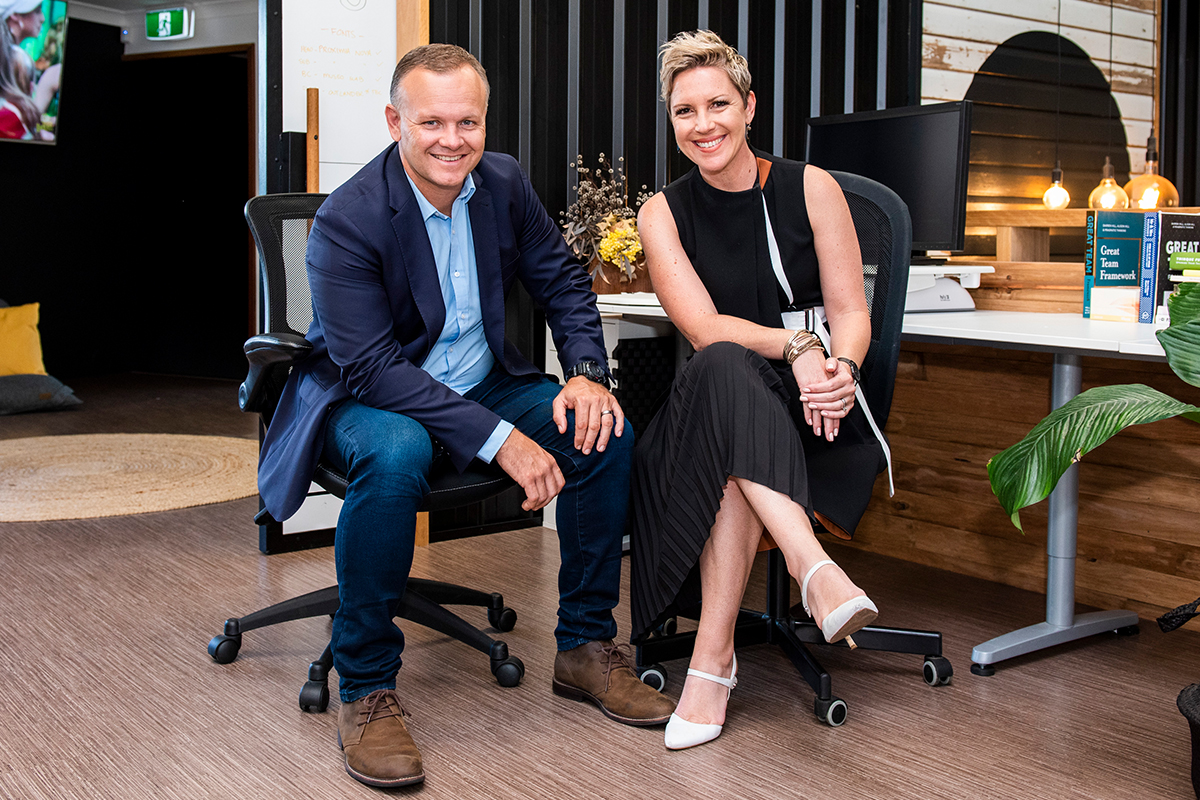Hybrid models of working for teams are here to stay, said Alison Hill, CEO of three-time AFR Fast 100 company, Pragmatic Thinking.
“While there are plenty of benefits to adopting a hybrid work model in your workplace, there are a set of predictable challenges that without awareness and understanding can impact how your team connect and how work is done,” said Alison, co-author of the new book Work From Anywhere.
“In the same way that challenges of disengagement, group-think and feedback present themselves in a typical office environment. Understanding the key challenges faced by hybrid teams allows you an opportunity to be proactive in the way your team is set up for success through a hybrid model.”
The five main challenges and how to address them
Lack of collaboration
“One of the biggest fears of adopting a hybrid approach is that individuals will work well individually. In September 2020, we conducted a ‘State of Remote Work’ survey with over 300 respondents; 47.7 per cent found that collaboration between teams to be the biggest challenge in navigating remote work. Without the ad hoc cross-pollination that can occur more organically in an office setting, or the pull towards collaborative problem-solving or project coordinating across divisions, this is one of the challenges that’s worth addressing,” the registered psychologist said.
“Collaboration is more than the structures and rhythms that happen in a specific location. Often true and effective collaboration requires high levels of trust and care. When we understand this, we can then be conscious about cultivating these in a new format of working.
“Strategies to help address this challenge start with caring about collaboration, it needs to be something that matters to your team in order for people to prioritise it in their work. Upgrade the resources and platforms you utilise for collaboration conversations and work. Platforms such as Miro provide a space for teams to co-create and dive into collaboration conversations.”
Stagnation (the opposite of ideation)
“The world of work requires innovation and change; one of the challenges for hybrid working teams is stagnation – getting caught in the pattern of doing what we’ve always done,” said Alison.
“Habits and rhythms are hard to break, and can feel harder to do en masse if the teams are operating in a hybrid fashion. One of the key things to recognise before addressing this challenge is that ideation and innovation was a challenge even when teams were co-located. Group-think or egos pulled down the courage that is required to think differently.
“In order to address this challenge, teams need to start by innovating their innovation process. Create a mix of both synchronous (do it at the same time) and asynchronous (do it at a time when individuals are at their best) work.
“Share challenges, share ideas and then allow people to do the deep thinking work in a way that best works for them. Encourage movement throughout the day to help with brain functioning to think differently.
“Finally, create rhythms to stop (the BAU work), calibrate (what are we trying to achieve here), and celebrate (where have we got to in this process).”
Disconnection
“In hybrid teams, there are fewer opportunities for the whole team to be connected in the space. The challenge of disconnection is greater than just not being in the same space though; it’s the challenge of feeling mentally and physically separate and alone, isolated and removed. Disconnection can undermine culture and trust quickly, if not noticed or addressed,” Alison said.
“Create a culture of checking in with others. Ask the question, ‘Are you OK?’. Having this common practice via different communication mediums phone, video call, text message, internal messaging systems) helps to reduce the impact this challenge can have. Work on creating face-to-face time and create spaces to celebrate and talk about both work and life milestones achieved.”
Miscommunication
“Communication is hard even in the best of circumstances. Throw in technology difficulties, dropouts, different work schedules and second-guessing the context for others and it can become a minefield. Confusion, misinterpretation and heightened frustration as a result can be the outcomes, which doesn’t bode well for team success,” Alison said.
“In order to address this challenge, double down on communication skills. Take the time to check for understanding, paraphrase and summarise conversations before moving on – it will be time well spent. One of the reasons miscommunication can occur is due to the extreme lack of non-verbal cues in a hybrid team. When you’re relying on the face value of text-based conversations and video conference calls held on an unreliable internet connection, mistakes will be made.
“It’s important to address the story in your head anytime this comes up for your hybrid team. Question your assumptions and make use of Brene Brown’s wisdom from her TED Talk on vulnerability.”
Hybrid teams adopt a contractor mindset
“As mentioned previously, when hybrid teams become increasingly distant, they can begin adopting the mindset of contractors. While having control over individual work routines and daily schedules can be useful, it can also lead to a feeling of disconnection from the organisation as a whole,” she said.
“Commit to working on your hybrid team culture, continually discuss your company values, purpose and other cultural trademarks and you’ll be able to retain a sense of belonging in a hybrid work environment.”
Alison added that hybrid teams, like all workplace teams, need to be consistently reminded of the purpose they hold in the wider organisation.
“If you can commit to this, and the aforementioned behaviours, you’ll be well on your way to creating a high performing hybrid team,” she said.







